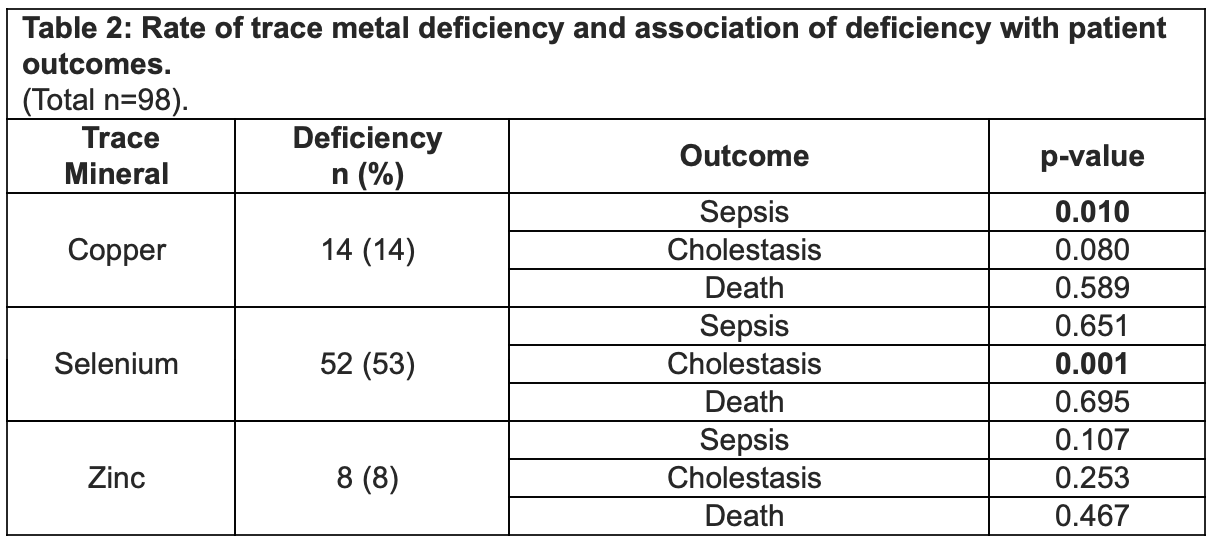Neonatology
Session: Neonatal Fetal Nutrition & Metabolism 4: Nutrition in the NICU
457 - Trace metal levels and influence of deficiency on adverse neonatal outcomes
Sunday, May 5, 2024
3:30 PM - 6:00 PM ET
Poster Number: 457
Publication Number: 457.2250
Publication Number: 457.2250

Anna E. Benson, DO (she/her/hers)
Resident
Indiana University School of Medicine
Carmel, Indiana, United States
Presenting Author(s)
Background: Trace metals are essential for growth and especially important in the neonatal period. Recommendations are available for intake of these trace metals in the neonate. However, these recommendations are based on limited data and there are few available descriptions regarding trace metal levels in neonates and their influence on outcomes. In addition, monitoring trace metal levels can be difficult as multiple factors, including inflammation, can affect accuracy.
Objective: To evaluate patient serum levels of zinc, selenium and copper and related outcomes including growth, rate of cholestasis, sepsis, and death in a cohort admitted to the neonatal intensive care unit (NICU) at Indiana University.
Design/Methods: We completed a retrospective chart review of NICU patients who received parenteral nutrition (PN) and had trace metal panel drawn between January 2016 and February 2023. Charts were reviewed for baseline labs, time on PN, trace metal panel level, dose of trace metals in PN, enteral feeds and supplements, and outcomes pertaining to growth, infection, and mortality. Sepsis was diagnosed based on positive blood culture and cholestasis as a direct bilirubin >2 mg/dL. Fisher's Exact Test was used to assess association between categorical variables. Spearman correlation was used to assess the correlation between growth over time and trace metal level. A p-value of 0.05 was used for significance.
Results: We included 98 patients in the study with demographic data shown in Table 1. The number of patients with trace metal elevation and deficiency are noted in Tables 1 and 2, respectively. Patient outcomes related to the diagnosis of trace metal deficiency are noted in Table 2. Copper deficiency was found to be significantly associated with sepsis (p=0.010) and selenium deficiency with cholestasis (p=0.001). The correlation between growth and trace metal levels is shown in Table 3.
Conclusion(s): Trace metal deficiency was common in our population. In addition, selenium and copper deficiency were associated with cholestasis and sepsis, respectively. While there was correlation between trace metal levels and growth, the negative association noted is unclear and highlights the need for further assessment to determine the influence of other patient factors, the technique used for growth measurement, or a true influence of the trace metal. This study highlights the need for further understanding with regards to trace metal levels and influence on neonatal outcomes.

.png)
.png)
